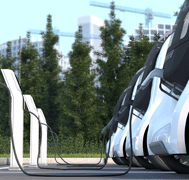 In the third quarter of 2020, 3.5% of total new vehicles registered in Canada were zero-emission vehicles (ZEVs).
In the third quarter of 2020, 3.5% of total new vehicles registered in Canada were zero-emission vehicles (ZEVs).
That’s more than twice the number of ZEVs compared to the previous quarter of 9,069 ZEVs sold.
With the rise of Tesla and other electric vehicle models, such as the Toyota Prius and Hyundai Ioniq, we’re starting to see more ZEVs on the road.
Recently, the Canadian government announced a new plan to ban the purchase of fuel-burning new cars and light-duty trucks starting 2035 onwards to reach net-zero emissions by 2050.
The goal, as Environment Minister Jonathan Wilkinson says, is “aligning Canada’s zero-emission vehicles sales target with those of the most ambitious North American jurisdictions.”
With a goal this ambitious, there are no doubt some challenges that the auto industry must face moving forward.
One of the biggest of these challenges is cost. Electric vehicles are expensive to manufacture.
The cost of producing an electric vehicle is significantly more than a gas-fueled car mainly because of the expensive materials and processes used in the production of its batteries.
That’s why it’s important to implement careful warehouse and inventory processes to reduce manufacturing and supply chain costs whenever possible.
In addition, the consistent increase in demand for electric vehicles is troubled by the challenges of battery supply, the collapse of oil prices, environmental concerns, and more.
These factors further strain the supply chain of electric vehicles struggling to meet not only consumer demand but also government mandates.
The main concern right now is securing supply and ensuring that the manufacturing and supply chain process is efficient.
For example, adopting thorough tracking and transparency throughout the production and distribution process can help manufacturers track data from many suppliers and routes.
It allows manufacturers to clearly identify how many components are in production, exact demand, costs of warehouse and distribution, and more.
With this information, auto companies can make better decisions about improving their supply chain processes and managing the supply of their components, such as batteries.
At SHEA Global, we offer manufacturing, supply chain, and distribution solutions that can help you rise to the challenge of ZEVs.
Not only can you track multiple inventory and demand options for more accurate supply, but you can also track vehicles in distribution and pricing.
Want to learn more about how we can help you? Contact us today!